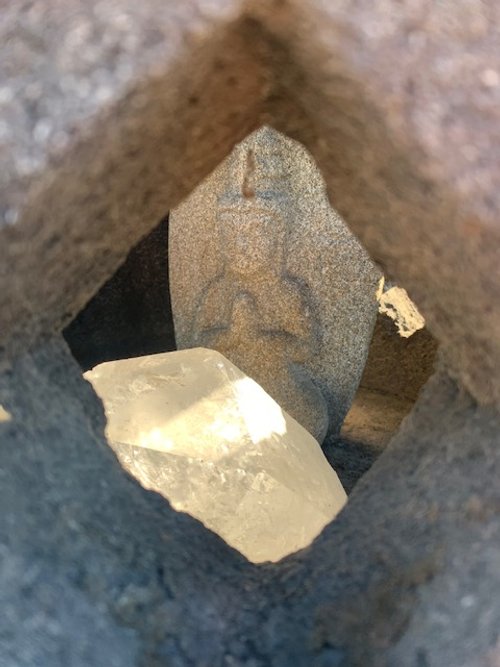Enso Peace Stupa
Unifying earth and sky in this present moment…each step expresses the way.
The Stupa's use as a sacred reliquary dates back into prehistory in India and Asia. In Buddhism stupas became widespread from India to Indonesia to Korea, as sacred vessels for Dharma practice and meditation. Their symbolism was based on the elements which created the vessel for containing the Buddha, symbol of our intrinsic Buddha nature, at the center.
Our Enso Peace Stupa Project provides a central place in our meditation garden for circumambulating walking meditation practice. It is dedicated as a stupa of compassion and peace.
The Stupa is a symbolic design bringing earth to sky and sky to earth, through the balance of the five elements. In early Buddhism it was the stupa that was the only depiction of the Buddha along the Buddha's footprints. Statues of an idealized human image of the Buddha only appeared around the 1st century A.D. The stupa and the Buddha are then seen as co-evol. (see line drawing below)
Stupas are symbolic structures of the levels of the five elements, which everything is composed of. They were often used in Buddhist time and pre Buddhist eras as reliquaries or focal points of practice containing sacred objects.
The stupa is placed on top of the small hill in the front of the garden, giving space to walk around it during Zen walking meditation / kinhin. The base for this stupa will be created by landscaping the hill into three levels with the stupa on top.
In this Indonesian style of stupa replicated from the era of the great Buddhist monuments and stupas at Borobudur, the largest Buddhist monument ever constructed in Java, the mid level is a lattice work and a Buddha rupa is placed inside.
"The shape of the stupa represents the Buddha, crowned and sitting in meditation posture on a lion throne. His crown is the top of the spire; his head is the square at the spire's base; his body is the vase shape; his legs are the four steps of the lower terrace; and the base is his throne."
The Stupa = Buddha nature
Buddha Nature = YOU = Selfless Self
How to express this unfabricated essential self ?





